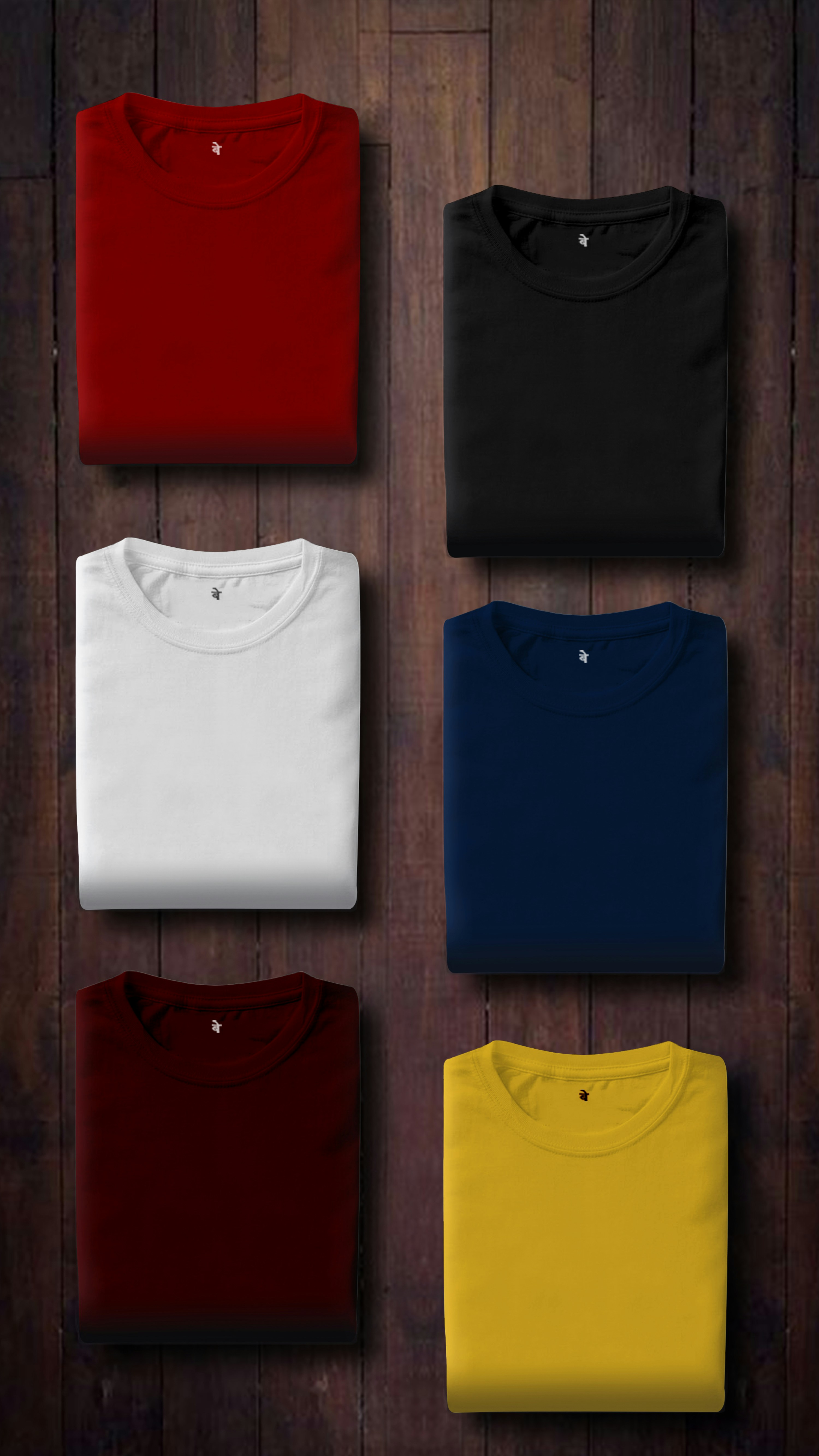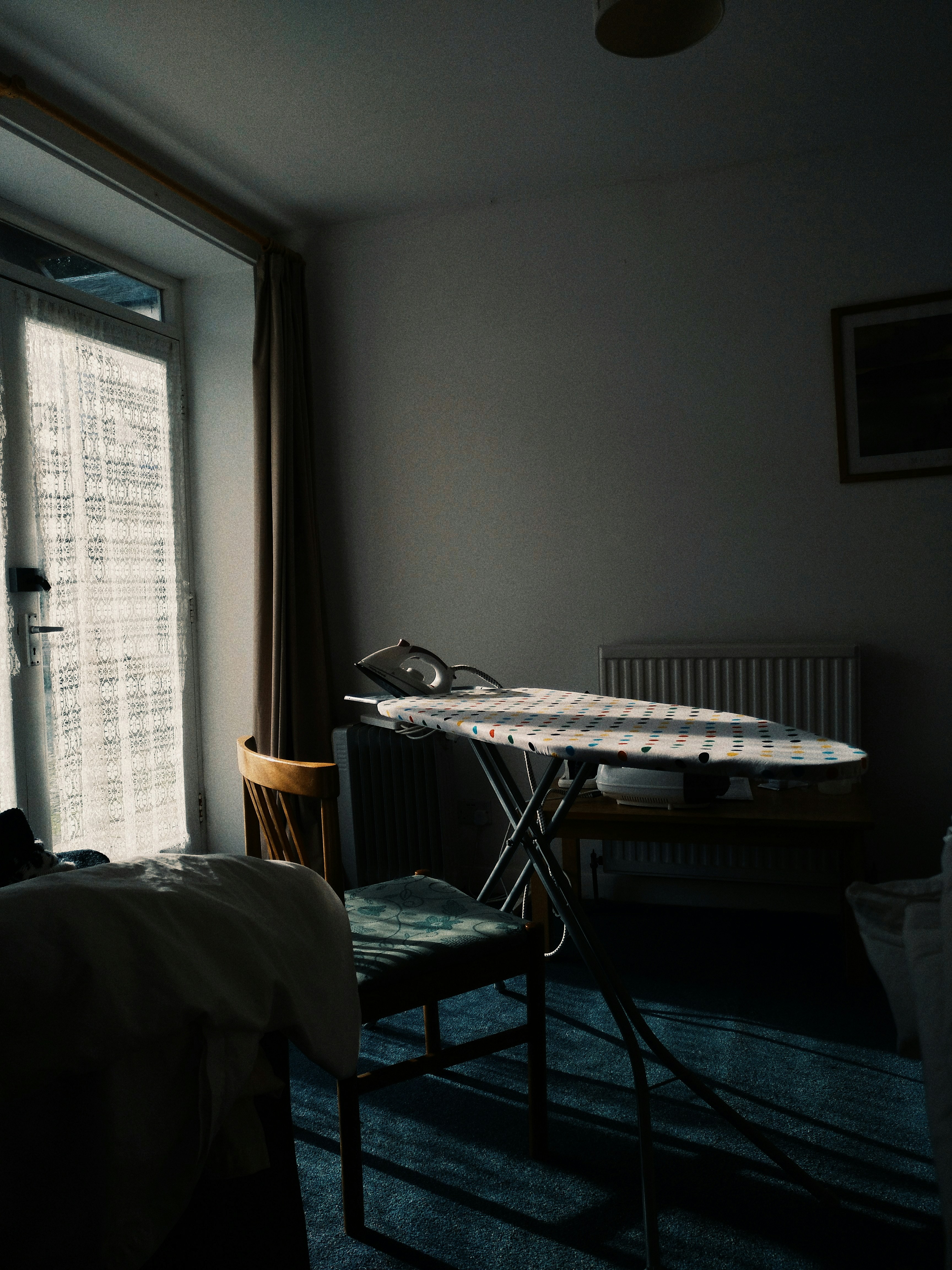Have you ever struggled to achieve wrinkle-free clothes after ironing? If so, you’re not alone. Ironing can be a tricky task, but with the right techniques, you can achieve smooth and wrinkle-free results every time. In this article, we will explore some effective ironing techniques that will help you transform your wrinkled garments into perfectly pressed outfits. Whether you’re ironing a delicate blouse or a pair of trousers, these tips will ensure that you achieve professional-looking results without any hassle. So, let’s dive in and discover the secrets to achieving wrinkle-free clothes through effective ironing techniques.
Understanding The Basics Of Ironing
Ironing is a common household chore that many of us have to tackle regularly. It involves the use of a heated iron to smooth out wrinkles and creases in clothing, leaving them looking neat and presentable. Understanding the basics of ironing is essential to achieve wrinkle-free clothes. Let’s explore the key elements that contribute to successful ironing.
Knowing The Role Of Moisture
Moisture plays a crucial role in the ironing process. It helps to relax the fabric fibers, making them more pliable and easier to smooth out. Before ironing, it is important to ensure that your clothes are slightly damp. This can be achieved by either misting them with water or ironing them while they are still slightly wet from the washing machine. However, be careful not to make them too wet, as this can cause water spots or shrinkage.
Why Heat Is Essential
Heat is another vital element in ironing. It helps to break down the bonds between the fabric fibers, allowing them to be reshaped and flattened. Most irons have adjustable temperature settings to accommodate different types of fabric. It is crucial to set the iron to the appropriate temperature for the garment you are ironing to prevent scorching or burning.
The Significance Of Pressure
Applying the right amount of pressure while ironing is essential to achieve smooth and wrinkle-free results. Pressing too lightly may not effectively eliminate wrinkles, while pressing too hard can stretch or distort the fabric. It is recommended to apply even pressure and let the weight of the iron do the work. If needed, you can also use a bit of additional pressure for stubborn wrinkles, but be cautious not to overdo it.
Importance Of Ironing Setting
The ironing setting you choose can greatly impact the final result. Some fabrics require steam, while others are better ironed with a dry heat. Steam irons have the advantage of providing an additional burst of moisture to help remove tough wrinkles. On the other hand, a dry iron may be suitable for delicate fabrics that are prone to water spots. Understanding the ironing settings and their impact on different fabrics is crucial for achieving the best results.
Choosing The Right Iron
Choosing the right iron is an important step to ensure effective and efficient ironing. There are several factors to consider when selecting an iron that suits your needs.
Difference Between Steam And Dry Iron
The first decision you will face is whether to choose a steam iron or a dry iron. A steam iron uses water to produce steam, which helps in the ironing process by adding moisture to the fabric. This can be particularly useful for tackling stubborn wrinkles. On the other hand, a dry iron does not have a steam function and relies solely on heat to smooth out wrinkles. The choice between the two largely depends on personal preference and the types of fabrics you frequently iron.
Choosing Between Non-stick And Stainless Steel Soleplate
The soleplate, the flat surface that comes into contact with the fabric, is another crucial consideration when choosing an iron. Non-stick soleplates are typically coated with materials like ceramic or Teflon, which make the iron glide smoothly over the fabric. They are particularly useful for delicate fabrics that are prone to sticking. On the other hand, stainless steel soleplates are known for their durability and heat distribution. They are more suitable for heavy-duty ironing tasks.
The Perks Of Having An Auto-off Function
An auto-off function is a safety feature that automatically shuts off the iron after a certain period of inactivity. This is especially useful if you tend to forget to turn off the iron or if you have young children around. An iron with this feature can provide peace of mind and help prevent accidents.
Preparing Clothes For Ironing
Before diving into the ironing process, it is important to properly prepare your clothes. Taking the time to prepare them will ensure better ironing results.
Why Laundry Sorting Is Key
Sorting your laundry is a fundamental step in maintaining the quality of your clothes and ensuring effective ironing. Sort your clothes based on fabric type and color. Separating darks from lights and delicate fabrics from heavy fabrics can help prevent color bleeding or damage. Additionally, sorting clothes allows you to adjust the ironing temperature and settings accordingly.
How To Properly Dampen Clothes
Dampening your clothes before ironing can significantly improve the ironing process. One effective method is to use a spray bottle filled with water to lightly mist the garment. Another approach is to iron slightly damp clothes directly after removing them from the washing machine. The dampness helps to relax the fabric fibers, making them easier to smooth out.
Understanding The Importance Of Temperature Settings
Different fabrics require different temperature settings for effective ironing. It is important to familiarize yourself with the appropriate temperature ranges for various fabric types. Test the iron temperature on an inconspicuous area of the garment before proceeding to avoid any heat-related damage. Taking the time to adjust the temperature settings for each garment will ensure optimal results and prevent accidental scorching or burning.
Ironing Shirts and Blouses
Shirts and blouses are wardrobe staples that often require ironing to maintain a crisp and professional appearance. Ironing them properly can make a significant difference in how they look and feel. Here’s a step-by-step guide to help you achieve wrinkle-free shirts and blouses.
Starting With The Collar
Begin by laying the shirt flat on the ironing board, ensuring that the collar is smooth and open. Start ironing from the underside of the collar. Gradually move the iron towards the outer edge, applying gentle pressure. Flip the collar over and repeat the process on the other side. This technique helps to prevent creasing and achieve a polished look.
Button Plackets And The Yoke
After ironing the collar, move on to the button plackets and the yoke. Button the shirt up completely before ironing the plackets, ensuring that they are flat and free of wrinkles. Then, move on to the yoke—the upper part of the back—by sliding the iron horizontally from one shoulder to the other. Smooth out any wrinkles along the way.
Ironing Shirt Sleeves And Cuffs
Next, focus on the sleeves. Unbutton the cuffs and lie each sleeve flat on the ironing board, ensuring that there are no wrinkles or creases. Start ironing from the shoulder seam down towards the cuff, moving the iron in a straight motion. Repeat this process on the other sleeve. Pay extra attention to the areas around the cuffs to achieve a polished finish.
Smoothing Out The Shirt Body
To iron the body of the shirt, first, insert the top part of the shirt between the ironing board and the back of the shirt to avoid ironing through both sides. Iron the front side by starting at the shoulder and working down towards the bottom hem. Repeat the same process on the back of the shirt. Pay attention to any pleats or darts, ironing them flat to ensure a smooth finish.
Ironing Trousers and Jeans
Trousers and jeans can be notoriously difficult to iron due to their heavy fabric and specific design elements. However, with the right techniques, you can achieve wrinkle-free pants.
Starting At The Waistband And Fly
Begin by turning the pants inside out and lay them flat on the ironing board. Place the waistband over the narrow end of the ironing board and press it gently. Iron the waistband, including the fly area, to ensure a neat appearance. Pay attention to any existing creases or pleats and make sure to remove them during this process.
Ironing The Pant Legs
Once you have finished the waistband and fly, it’s time to move on to the pant legs. Start from the inside of the pant leg and slide the iron from the upper thigh down towards the hem. Smooth out any wrinkles or creases along the way. Repeat the process on the other pant leg, always working from the inside to avoid ironing through to the front side.
The Trick To Ironing Pleats
If your pants have pleats, take extra care when ironing them. Start by opening up each pleat and placing a thin cloth or towel between the pleat and the fabric underneath. This will prevent the pleat from being flattened and preserve its shape. Iron the pleats gently, pressing the iron over the thin cloth. Remove the cloth once the pleats are properly ironed.
Keeping The Cuffs Wrinkle-free
Lastly, iron the cuffs to complete the ironing process for trousers and jeans. Open up each cuff and lay it flat on the ironing board. Use the tip of the iron to press out any wrinkles or creases. For jeans with pre-faded or distressed areas, it is essential to iron them carefully, avoiding excessive pressure that may further damage the distressed look.
Ironing Skirts and Dresses
For skirts and dresses, proper ironing techniques can make a significant difference in their overall appearance. Whether you’re dealing with pleats, ruffles, or various fabric materials, here’s how to achieve smooth and wrinkle-free skirts and dresses.
Dealing With Pleats and Ruffles
Pleated and ruffled skirts can be challenging to iron due to their intricate designs. Start by identifying the pleats or ruffles and carefully ironing them one at a time. Place a thin cloth or towel over the pleats or ruffles to prevent flattening and protect delicate fabrics. Iron the cloth-covered area of the skirt, applying gentle pressure. Remove the cloth once the pleats or ruffles are properly ironed.
Ironing The Body Section
For the body section of skirts and dresses, lay them flat on the ironing board, ensuring that there are no wrinkles or creases. Iron from the top down, moving the iron in a straight motion. Pay attention to any seams or darts, ironing them flat to achieve a smooth finish. If the fabric is delicate, consider placing a thin cloth or towel between the iron and the fabric to prevent damage.
Working With Various Skirt And Dress Materials
Different skirt and dress materials require different ironing techniques. For cotton and linen skirts or dresses, use a high temperature setting, as these fabrics can withstand heat. Be cautious not to leave the iron in one spot for too long to avoid scorching the fabric. For silk, use a low temperature and place a thin cloth or towel between the iron and the fabric. Wool fabrics require a cooler temperature and a gentle pressing motion to avoid damaging the fibers. For synthetic fabrics, such as polyester or nylon, use a low to medium temperature setting and iron with caution as they can melt or warp under high heat.
Ironing Different Fabrics
Understanding how to iron different types of fabrics is crucial for achieving wrinkle-free results while avoiding damage. Here are some tips for ironing common fabric types.
Working With Cotton And Linen
Cotton and linen are durable fabrics that can withstand higher temperatures. It is advisable to use a high temperature setting for these types of fabrics. Be mindful of not leaving the iron in one spot for too long to prevent scorching. It is also important to iron these fabrics while they are slightly damp for easier wrinkle removal.
How To Iron Silk Without Damage
Silk is a delicate fabric that requires special care when ironing. It is best to use a low temperature setting for silk garments. To protect the fabric from direct heat, place a thin cloth or towel between the iron and the silk. This will prevent the silk from getting shiny or scorched due to the heat. Silk should be ironed on the reverse side whenever possible.
Tips For Ironing Wool
When ironing wool, it is crucial to use a cooler temperature setting to avoid damaging the fibers. Opt for a gentle pressing motion rather than sliding the iron. Place a thin cloth or towel between the iron and the wool to further protect the fibers. It is recommended to use steam sparingly on wool fabrics, as excessive moisture can cause them to become misshapen.
Ironing Synthetic Fabrics
Synthetic fabrics like polyester or nylon require a lower to medium temperature setting. High heat can cause these fabrics to melt or warp. It is essential to iron synthetic fabrics quickly, without applying too much pressure. Always check the care instructions for synthetic garments, as they can vary depending on the specific fabric blend.
Special Ironing Techniques
Certain garments may require special ironing techniques to preserve their unique qualities. Here are some tips for ironing clothing with prints, designs, embroideries, beads, and sequins.
Dealing With Prints And Designs
When ironing clothing with prints or designs, it is important to iron them inside-out whenever possible. This protects the design from direct heat and prevents it from getting damaged or fading. If the print or design requires additional pressing, place a thin cloth or towel over it and iron gently.
Ironing Embroideries And Beaded Works
Embroidered or beaded garments require extra care during the ironing process. It is advisable to place a thick towel on the ironing board to create a padded surface. Lay the garment flat on the towel, ensuring that the embroidery or beaded area is facing down. Gently iron the opposite side of the garment, taking care not to press directly on the embellishments. This technique helps to maintain the integrity of the embroidery or beaded work.
Tips For Ironing Sequined Clothing
Sequined clothing requires delicate handling to prevent the sequins from getting damaged or falling off. To iron sequined garments, turn them inside-out and place a thin cloth or towel over the sequins. Iron the garment on the reverse side without applying too much pressure. The heat will pass through the cloth or towel and help remove wrinkles without harming the sequins.
Common Ironing Mistakes And How To Avoid Them
Even with proper techniques, it is easy to make mistakes while ironing. Recognizing these common mistakes and knowing how to avoid them can ensure better ironing results.
Ironing Clothes While They Are Too Dry Or Too Wet
Ironing clothes that are too dry or too wet can lead to unsatisfactory results. Clothes that are too dry may not respond well to the heat and pressure, and wrinkles may not be effectively removed. On the other hand, clothes that are too wet can cause water spots or shrinkage. It is crucial to find the right balance and ensure that your clothes are slightly damp before ironing.
Incorrect Temperature Setting
Using the wrong temperature setting can result in damaged or scorched garments. Always refer to the care instructions on the clothing label and adjust the iron temperature accordingly. Additionally, it is important to test the iron temperature on an inconspicuous area of the garment before ironing the visible areas to avoid any irreversible damage.
Inadequate Ironing Techniques
Inadequate ironing techniques can lead to unsatisfactory results, such as persistent wrinkles or fabric damage. Applying too little or too much pressure, not using steam when necessary, or ironing in the wrong direction are common mistakes. It is essential to familiarize yourself with proper ironing techniques and take the time to practice them for optimal results.
Maintaining Your Iron
Proper maintenance of your iron can prolong its lifespan and ensure consistent performance. Here are some tips for keeping your iron in good condition.
Cleaning The Iron Soleplate
Over time, the soleplate of your iron may accumulate residue or dirt that can affect its performance. To clean the soleplate, make a paste using baking soda and water. Apply the paste onto the soleplate and gently scrub with a soft cloth. Rinse the soleplate thoroughly and wipe it dry. Avoid using harsh abrasives or chemicals that could damage the soleplate.
When To Refill Your Iron
Knowing when to refill your iron with water is important for maintaining steam efficiency. Most irons have a visible water level indicator that shows when the water needs to be replenished. Refill the water tank when it is empty or near empty to ensure a consistent steam flow during ironing. Remember to always use distilled or demineralized water if recommended by the manufacturer to avoid mineral buildup.
Storing Your Iron Properly
Proper storage of your iron can help prevent accidents and ensure its longevity. Allow your iron to cool down completely before storing it. Avoid wrapping the cord tightly around the iron, as this can damage the cord or strain the connection. Store the iron in an upright position, preferably in a designated iron storage rack or cupboard. This will help protect the soleplate and prevent accidental damage.


